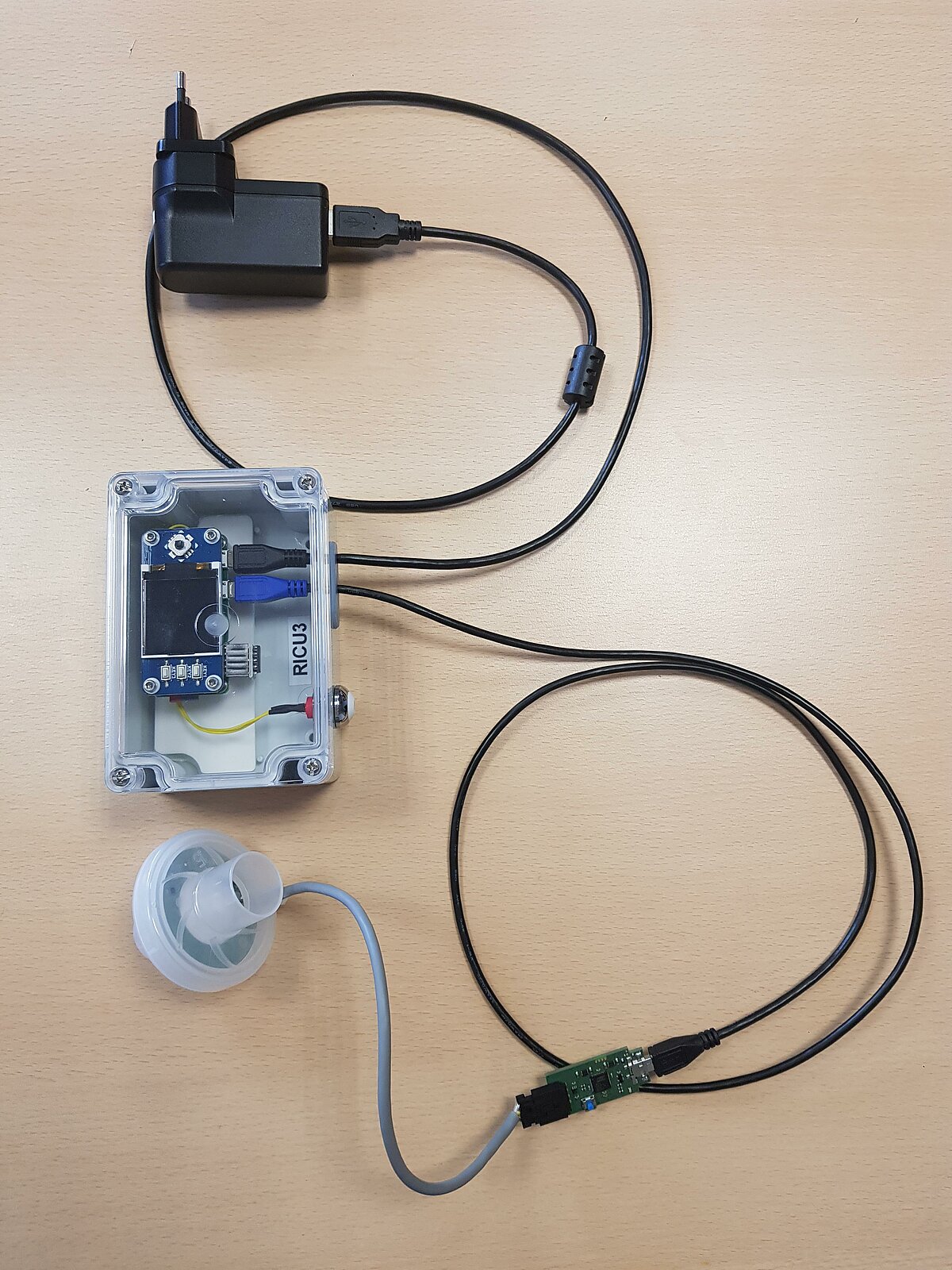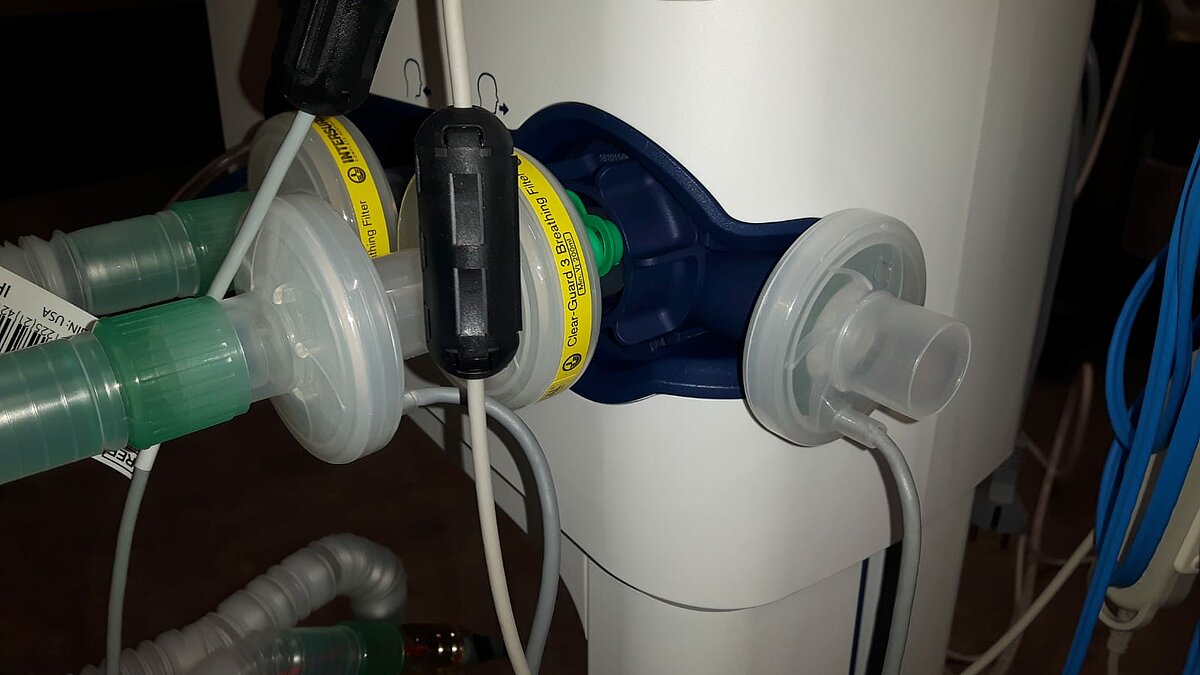
Within the framework of the state research program “Mitigation of Covid-19” at the Toxicology and Sepsis Clinic of Riga East Clinical University Hospital (RAKUS), monitoring of Covid-19 patients with special sensors has been started, which specialists connect to artificial ventilation equipment. Carefully selected sensors analyze the patient's exhaled air and are designed to determine the spectrum of various chemicals (volatile organic compounds - VOCs) in the exhaled air. By collecting a sufficient amount of data and performing their statistical analysis, it will be possible to observe the characteristic changes in the composition of chemicals in the patient's breath in comparison with his symptoms and other medical parameters. The aim of the study is to predict the risk of possible complications more quickly.
The research is led by specialists of the Institute of Clinical and Preventive Medicine (LU KPMI) of the University of Latvia. Close cooperation with RAKUS, the Latvian Center for Infectious Diseases, as well as the specialists of JLM Innovation GmbH in Germany, who have developed and adapted sensors for use in artificial lung ventilation equipment, is essential for achieving the results. First, the scientists involved in the study evaluated what sensors would be needed. For example, the new analysis equipment includes sensors that detect humidity, temperature, as well as specific metal-oxide sensors for the detection of VOCs in the breath. To date, metal oxide gas sensors have already been used in laboratories as well as for air quality monitoring.
The scientists' newly developed sensor module is then suitable for use in artificial lung ventilation. The new device is powered by a small but powerful enough minicomputer. Also customized JLMlogSP specially designed software that helps to collect and store measurement data. They can be obtained by connecting to the analysis device using a wifi connection activated for the time of data exchange. In the course of the research, by performing separate repeated measurements, the most optimal location of the sensors was determined - they are connected to the air outlet of the artificial ventilation device of the lungs, thus it does not affect the operation of the device itself. As a result, the sensors do not come into contact with the patient, are safe for use by both doctors and patients, and are not exposed to potentially dangerous exposure to excessive humidity, temperature and bacterial contamination. It will be possible to rid the sensors of bacterial and viral contamination using ultraviolet light.
The researchers predict that the newly developed system will allow doctors to easily and non-invasively monitor the changes in the body of patients connected to the respiratory system, as well as at the same time predict the course of the disease and adjust treatment accordingly. Experts hope that this will also provide an opportunity to learn about potential additional infections and to adjust therapy in a timely manner, which will improve the chances of recovery.


The study on the use of sensors in the lung artificial ventilation device is performed on the clinical, biochemical, immunogenetic paradigms of the Covid-19 infection project of the National Research Program “Covid-19 Mitigation” and their correlation with socio-demographic, etiological, pathogenetic, diagnostic, therapeutic and prognostic factors to be included in the guidelines ”, Project no. VPP-COVID-2020 / 1-0023.
 LU konference
LU konference